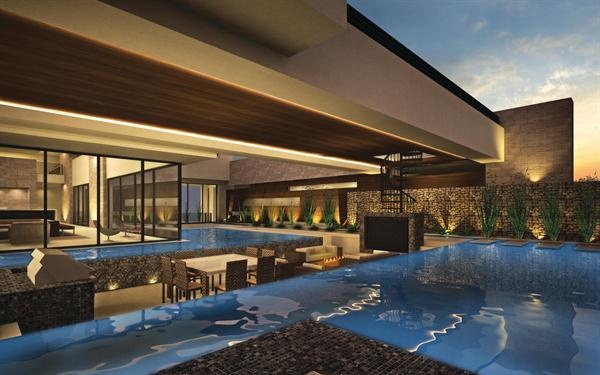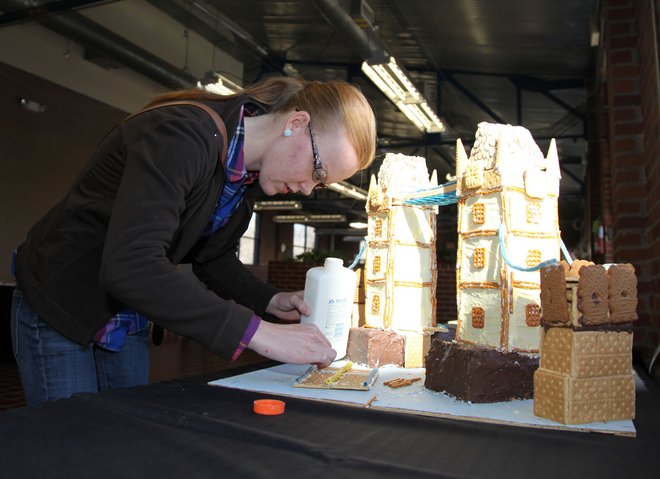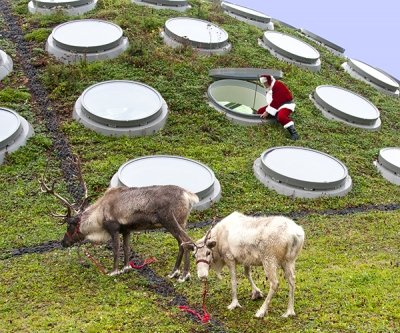One invention that architects and engineers will probably take to new levels of crazy creativity faster than you can ask, “Are 3D printers already passé?”
Category: For Architecture Students
Couldn’t resist posting this happy, musical video in praise of worldwide architecture!
How many did you recognize?
How can architects create, market, and scale knowledge for a competitive advantage? It’s all about Social Media.
http://www.youtube.com/watch?v=4NwDeeu8QTM
AIA National posted this excellent video in January. Presenter Brian Skripac outlines the various ways architects can (and should!) use social media. He dispels certain social media myths (social media won’t replace your website or the need for face-to-face networking) and clarifies the goals for architects who are active in social media:
- Marketing & Networking
- Firm & Individual Branding
- Ideas & Inspiration
- Thought Leadership
- Firm Culture & Community
- Corporate Memory
- Internal Communications & Transparency
Skripac rightly points out that there are WAY too many social networks to choose from, so you shouldn’t feel the need to dive into all of them at once. The ones which seem to be most effective for professionals are Twitter, Facebook, LinkedIn, and possibly Pinterest. (a/e ProNet has a Pinterest board that we’re pretty proud of. Check us out!) He also gives a shout out to several design firms and organizations that seem to be getting it right: Perkins + Will, Gensler, HOK, BNIM, and AIA Pittsburgh.
We hope you find this info useful. And we’re always looking for good Architects, Engineers, and Design Industry affiliates to follow… if you are one, or know one, leave us a comment!
Follow us on Twitter @aeProNet or find us on Facebook today.
 We’re proud to announce that two architecture students have received the David W. Lakamp AIA Scholarship offered each year through a/e ProNet’s partnership with the AIA.
We’re proud to announce that two architecture students have received the David W. Lakamp AIA Scholarship offered each year through a/e ProNet’s partnership with the AIA.
The American Institute of Architects (AIA) have selected William Hood and Jake DeNeui to receive the 2012 a/e ProNet scholarship. The program, initiated by a/e ProNet, a national association of insurance brokers who are committed to providing liability insurance and loss prevention to architects, is awarded to architecture students who demonstrate a particular interest in the principles of management in architecture practice. Hood and DeNeui will both receive $2,500 to use towards their tuition.
The a/e ProNet scholarship was initiated in 1990 by a/e ProNet and is open to third and fourth year undergraduates, as well as graduate students of architecture enrolled in a NAAB- accredited professional degree program. Submissions are reviewed by jury members of the AIA Practice Management Knowledge Community. Candidates were graded on their transcripts, letters of recommendations, and an essay on how they would resolve a project management dilemma.
To read their case study topic responses, please click here.
William Hood – The Cooper Union
Hood is currently pursuing a Bachelor of Architecture at the Irwin S. Chanin School of Architecture of The Cooper Union in New York City. He has worked as a model-maker with the architects Moorhead & Moorhead and Andrew Berman Architect, and as a marketing and communications manager for Van Alen Institute and Thomas Balsley Associates. In 2007, he graduated with Honors from the College of Social Studies at Wesleyan University in Middletown, Connecticut.
Jake DeNeui – Montana State University
DeNeui is a 22-year-old graduate student at Montana State University. His primary interests include martial arts, rock climbing, hiking and art. Jake’s other skills and interests include speaking Spanish, teaching and practicing martial arts, and actively sharing his faith in Jesus. He plans on working in civic architecture and someday owning his own firm.
You can learn more about the a/e ProNet Scholarship and eligibility here. A full list of past winners can be found on the a/e ProNet Scholarship page at our website. The next deadline for application submissions will be in November of 2013. Follow us on Twitter for scholarship alerts!
Remember when Architects and Engineers were still pondering the sustainability of the sustainability fad? In 2009, posts like LEED Accreditation – Fad or Necessity? from the Civil Engineering Central Blog and Is LEED a Load? from the Archinect Discussion Forum were popping up all over the place. Four years later, the industry may have a better grasp on what green means, but some of those original fears and worries may also have a right to remain. This week’s installment of Friday Finds by a/e ProNet includes a pair of articles commenting on the current status of LEED and Green Design.
As Important As It Is, LEED Can Be So Embarrassing — via TheAtlanticCities.com

“But, man, there are a lot of warts in this system.”
LEED has been criticized for:
Being insufficiently demanding of its applicants. Shoot high enough to seem relevant, but low enough that designers will see the standards as achievable and worth trying for.
USGBC, although a non-profit, needs revenues to keep the system going. “If difficulties in the standards or the process of application are too demanding, fewer potential applicants will be willing to pay the costs of documentation and formal review.”
Has “become pro forma, more about earning points than achieving actual environmental performance.”
“I recount this long-winded intro because my friend Lloyd Alter of the environmental website Treehugger has just written a terrific story about a new, supposedly super-green house being touted as “the new face of efficiency” even though it’s really a gigantic luxury house placed in a location where residents have no choice but to drive long distances to do anything. This is ultra-green? Sadly, LEED seems to think so.”
Read more about The New American Home 2013.
Designers’ Risk: The Dark Side of Going Green — via The Illinois Construction Law Blog
“The language and presumptions of sustainable “green” design are changing a significant portion of the landscape for all stakeholders in the construction and building-related industries. “Green” building impacts everything from the selection of carpeting and window treatments to how far the materials have to be shipped to the project before installation. And with ever evolving sustainable design standards and building codes (e.g. the International Green Construction Code), it is important that designers understand how “green” projects affect their risk. “
Here’s hoping the continued dialogue on these issues will lead to a better understanding and implementation of LEED.
In 2013, Professional Liability insurance provider Victor O. Schinnerer will host independent subject-matter experts for four webinars, all geared toward Architects, Engineers, and other Design Professionals:
 Employment Liability Issues in a Recovering Economy
Employment Liability Issues in a Recovering Economy
February 13, 2013, 1:00 – 2:00 pm eastern
Thomas L. McCally, Esq., Carr Maloney, P.C., Washington, DC
Design firms face various types of employment liability issues during the normal course of business. However, the downturn and subsequent recovery of the economy have brought these issues to the forefront of concerns for design firms. An attorney expert in litigating design firm employment practices claims will discuss the issues firms need to recognize as the economy improves and firms prepare to staff-up for the recovery.
Business Models and Financial Opportunities in a Recovering Economy
April 10, 2013, 1:00 – 2:00 pm eastern
Michael O’Brien, ASA, Rusk, O’Brien, Gido + Partners, Washington, DC
From funding sources to procurement procedures, the financial environment for professional services has significantly changed since the pre-recession economy. Both in the public and private sectors, the rules, risks, and routes to financial success are different. Professional services firms need to adjust their business plans to remain viable and to benefit from the opportunities in a recovering economy. Specializing in solving the business management and ownership challenges of consulting firms, our expert will share thoughts on the needs and responses of firms in the new service environment.
Technology Risks for Design Professionals
September 11, 2013, 1:00 – 2:00 pm eastern
David J. Shannon, Esq., Marshall, Dennehey, Warner, Coleman, Goggin, Philadelphia, PA
Technology risks associated with the business operations and professional services of design professionals is not new. However, the increased use of building information technologies and collaborative delivery methods, such as integrated project delivery, may increase the exposure of firms to traditional technology risks, as well as introduce new risks. Join our discussion with an attorney expert in technology risks to learn what exposures design firms need to be aware of and how to manage those exposures.
Insurance and Legal Questions for the Collaborative Design Team
October 9, 2013, 1:00 – 2:00 pm eastern
Rebecca H. Farnum, Esq., Thompson & Bowie, LLP, Portland, ME
Building information modeling and integrated project delivery provide a platform through which all members of the design and construction team collaborate. As with all new technologies and delivery methods, there are important questions the collaborating team should ask to identify and respond to legal and insurance issues in the open transfer of information in a contractual arrangement of shared risk and reward. Our expert will discuss what types of questions the team should ask before formally entering a collaborative agreement.
Visit our website to download the full PDF version of the 2013 Victor O. Schinnerer webinar schedule.
Fa-la-la-la-la La-la La LA!
Gingerbread used in architectural engineering competition

Santa visits the Living Roof at the Cal Academy of Sciences

Whether you celebrate Christmas, or Hanukkah, or anything else this season, we at a/e ProNet wish you a happy, safe holiday. We hope you spend it with the people you love.
“My big question for Architecture is, Why do humans have to adapt to buildings? And why can’t Architecture adapt to humans?”
Doris Kim Sung
[youtube=http://www.youtube.com/watch?feature=player_embedded&v=-Ms5qoMO3gQ]
It is in the very nature of a trend to move on past its point of highest enthusiasm and fizzle out in favor of something else. Architecture, like everything else, goes through these periods of interest and inclination. For a long time, Sustainable Architecture–environmentally conscious design–was considered the latest trend. Now that trend is evolving.
Resilient Architecture takes the ideas behind sustainable design a step further. Metal That Breathes is one of the latest evolutionary byproducts of the new trend, and is best evidenced by the work of Architect Doris Kim Sung of the University of Southern California.
Inspired by her original interest and education in Biology, Sung used so-called “smart metal” to design and build her Bloom installation in Los Angeles. As Sung pointed out in her recent TED talk, “[Skin is] the first line of defense for the [human] body… Our building skins should be more similar to human skin.”
One author on the Core77 design blog explained Sung’s work this way:
Sung has been experimenting with thermo-bimetals, two thin layers of metal that expand and contract, in response to temperature, at different rates. Laminating two like-sized sheets of different material together and subjecting them to a temperature change causes the sheet to curl up—and this phenomenon can be exploited to create a building that ingeniously shades itself as needed, requiring no external power.
Sounds crazy, no? And it’s possible that the American market is not yet ready to explore the possibilities of this breathing metal in its regular buildings. But as Sung mentioned in her recent TED talk, at least one Chinese developer is already including the thermo-bimetal screens in its design for a house. The screens “can actually open and close as the sun moves around on that surface,” said Sung. “[This implies] that we don’t need shutters, or drapes, or blinds anymore… we can control the amount of air conditioning you need inside that building.”
Watch Sung’s Metal That Breathes TED Talk (and hear about how the breathing capabilities of grasshoppers factor into her research!) here:
[youtube=http://www.youtube.com/watch?feature=player_embedded&v=wvIyVZf3qZU#!]
And in case you’re wondering about the deeper implications of this kind of beyond-the-basic-sustainability philosophy, I’ll leave you with this quote from a recent Treehugger.com blog post entitled Building Green Is No Longer Enough, It is Time To Build Resilient:
It turns out that many of the strategies needed to achieve resilience–such as really well-insulated homes that will keep their occupants safe if the power goes out or interruptions in heating fuel occur–are exactly the same strategies we have been promoting for years in the green building movement. The solutions are largely the same, but the motivation is one of life-safety, rather than simply doing the right thing. We need to practice green building, because it will keep us safe–a powerful motivation–and this may be the way to finally achieve widespread adoption of such measures. — Alex Wilson, founder of BuildingGreen
Visit our website for more details about the a/e ProNet David W. Lakamp AIA scholarship for architecture students. Two prizes ($2,500 each) awarded each year. Applications and submission details can be found at the AIA website. You can also read our earlier announcement of the 2012 scholarship on this blog.

